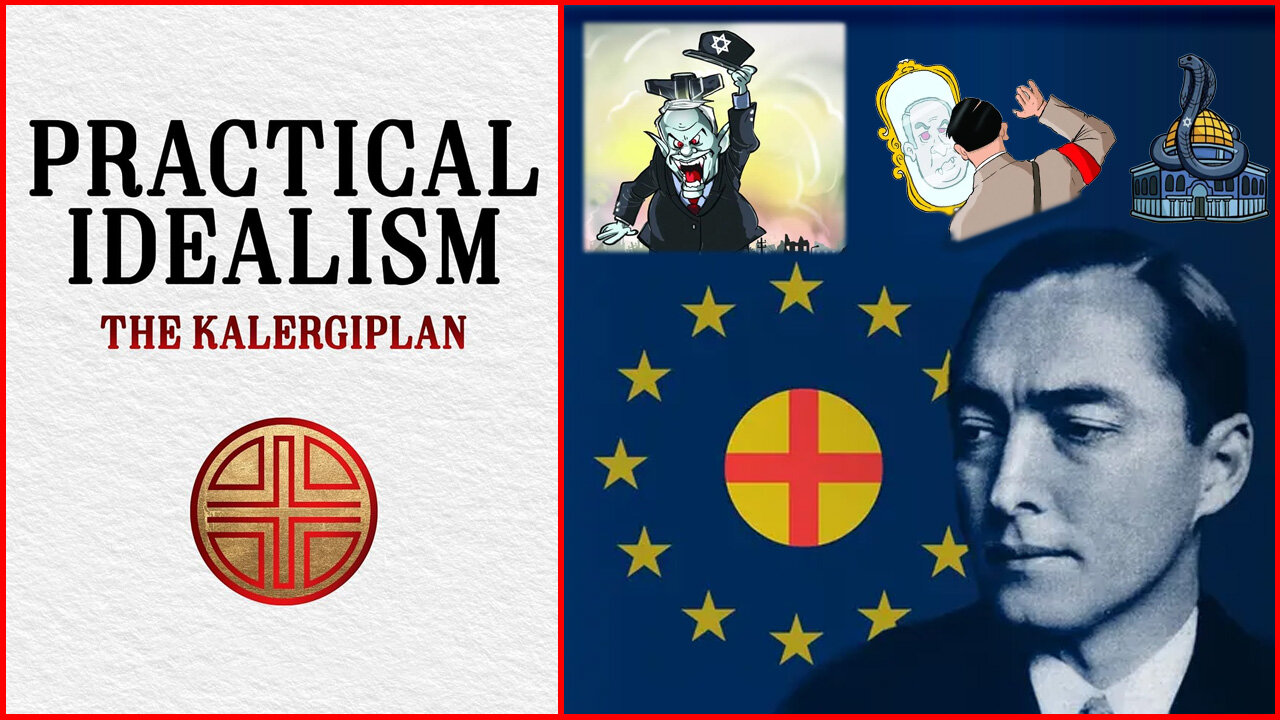Premium Only Content

'Practical Idealism' (1025) by Richard von Coudenhove-Kalergi
Richard von Coudenhove-Kalergi’s 'Practical Idealism' (the trans of this version is Curtis White) occupies a curious position in the intellectual history of twentieth-century Europe. Published in 1925, the work set out to articulate a vision for a renewed Europe following the devastation of the First World War. Coudenhove-Kalergi, the Austrian-Japanese aristocrat best remembered as the founder of the Pan-European movement, used this book to combine personal reflections, political theory, and cultural prophecy in an attempt to bridge idealism with concrete policy proposals. The result is a text both forward-looking and highly controversial, celebrated in some quarters as prescient and derided in others as naïve or even problematic.
Context and Themes: The early 1920s were marked by disillusionment with nationalism and the collapse of empires. Coudenhove-Kalergi diagnosed Europe’s malaise as rooted in political fragmentation and cultural exhaustion. His solution was not a retreat into isolationism but the creation of a supranational European federation, one capable of preventing war, fostering economic cooperation, and asserting cultural leadership in the world. 'Practical Idealism' insists that lofty values must be married to pragmatic action, hence the title: ideals without implementation are empty, while pure pragmatism without values is destructive.
Central to the work is the notion that Europe should embrace unity, cosmopolitanism, and the blending of cultures. Kalergi saw this not merely as a political project but as a sociological inevitability: technological progress, urbanization, and social mobility would gradually erode old hierarchies and national distinctions. He also wrote extensively about the roles of intellectual elites, religious traditions, and new forms of leadership in shaping a European identity.
Strengths: One of the strengths of 'Practical Idealism' lies in its prescience. Long before the European Union, Coudenhove-Kalergi envisaged a continental federation grounded in shared values, collective security, and economic integration. His insistence that peace could only be secured through supranational cooperation anticipated later institutions like the European Coal and Steel Community and NATO.
Equally striking is his attempt to blend philosophy with policy. Unlike utopian writers who remained abstract, Kalergi advocated concrete reforms, such as the development of common institutions and the cultivation of a European cultural elite capable of transcending narrow nationalism. In this respect, he can be seen as an early architect of what became post-war European integration.
Criticisms: Yet 'Practical Idealism' is far from unproblematic. Kalergi’s emphasis on cultural synthesis sometimes veers into racial speculation that reads uncomfortably today. He engaged in the language of “types” and “peoples” common to interwar sociology, which has since been criticized as essentialist and racially deterministic. Furthermore, his reliance on elites as the drivers of progress can appear undemocratic, privileging aristocratic or intellectual classes at the expense of popular participation.
Another limitation is the vagueness of some of his proposals. While he was clear in his diagnosis of nationalism’s dangers, his prescriptions for how precisely to build unity often lacked specificity beyond general calls for federations and moral leadership. As such, the book oscillates between moments of prophetic brilliance and sections that feel speculative or elitist.
Legacy: Despite its flaws, 'Practical Idealism' remains an important historical document. It reflects both the optimism and the anxieties of interwar Europe: optimism that the tragedies of the First World War could lead to a higher stage of human cooperation, and anxiety that the old order of nation-states was no longer viable. Kalergi’s work directly influenced the Pan-European Union, the earliest organized movement for European unity, and he would later inspire post-1945 figures like Winston Churchill and Robert Schuman.
Conclusion: In reviewing 'Practical Idealism', one must recognize both its ambition and its datedness. It is at once visionary in its call for a united Europe and deeply marked by the intellectual milieu of the 1920s, with its racial typologies and elitist frameworks. For readers today, the book is less a practical blueprint than a historical lens through which to understand the origins of European federalist thought. Coudenhove-Kalergi’s central claim, however—that ideals must be made practical, and politics must be informed by higher values—remains a powerful reminder of the delicate balance between vision and action in the pursuit of peace.
-
 LIVE
LIVE
Mally_Mouse
4 days ago🎮 Throwback Thursday! Let's Play: Kingdom Hearts 1 pt. 2
75 watching -
 LIVE
LIVE
Barry Cunningham
4 hours agoBREAKING NEWS: LETITIA JAMES INDICTED FOR MORTGAGE FRAUD!!! LIBTARD TEARS ARE FLOWING!
2,674 watching -
 1:17:42
1:17:42
Glenn Greenwald
4 hours agoUS/Venezuela Escalations: Revisiting Key Developments and the Push for Regime Change | SYSTEM UPDATE SPECIAL
75K87 -
 LIVE
LIVE
ProvenTactics
1 hour agoFPS Shooter Games
21 watching -
 LIVE
LIVE
Phyxicx
1 hour agoHarvester - The Funniest, Most Deranged 90s Game Ever | 18+ | 10/9/2025
42 watching -
 LIVE
LIVE
LFA TV
21 hours agoLIVE & BREAKING NEWS! | THURSDAY 10/9/25
681 watching -
 LIVE
LIVE
megimu32
1 hour agoON THE SUBJECT: Sequels That Slapped! 🎬
83 watching -

tminnzy
2 hours agoThe Final Runn || !stakeus || !stake
34 -
 LIVE
LIVE
Wahzdee
5 hours agoBF6 Countdown Stream – What to Play Till Launch? Let’s Talk Battlefield
12 watching -
 LIVE
LIVE
StevieTLIVE
1 hour agoNew WZ Season Zombies Mode is BACK
9 watching